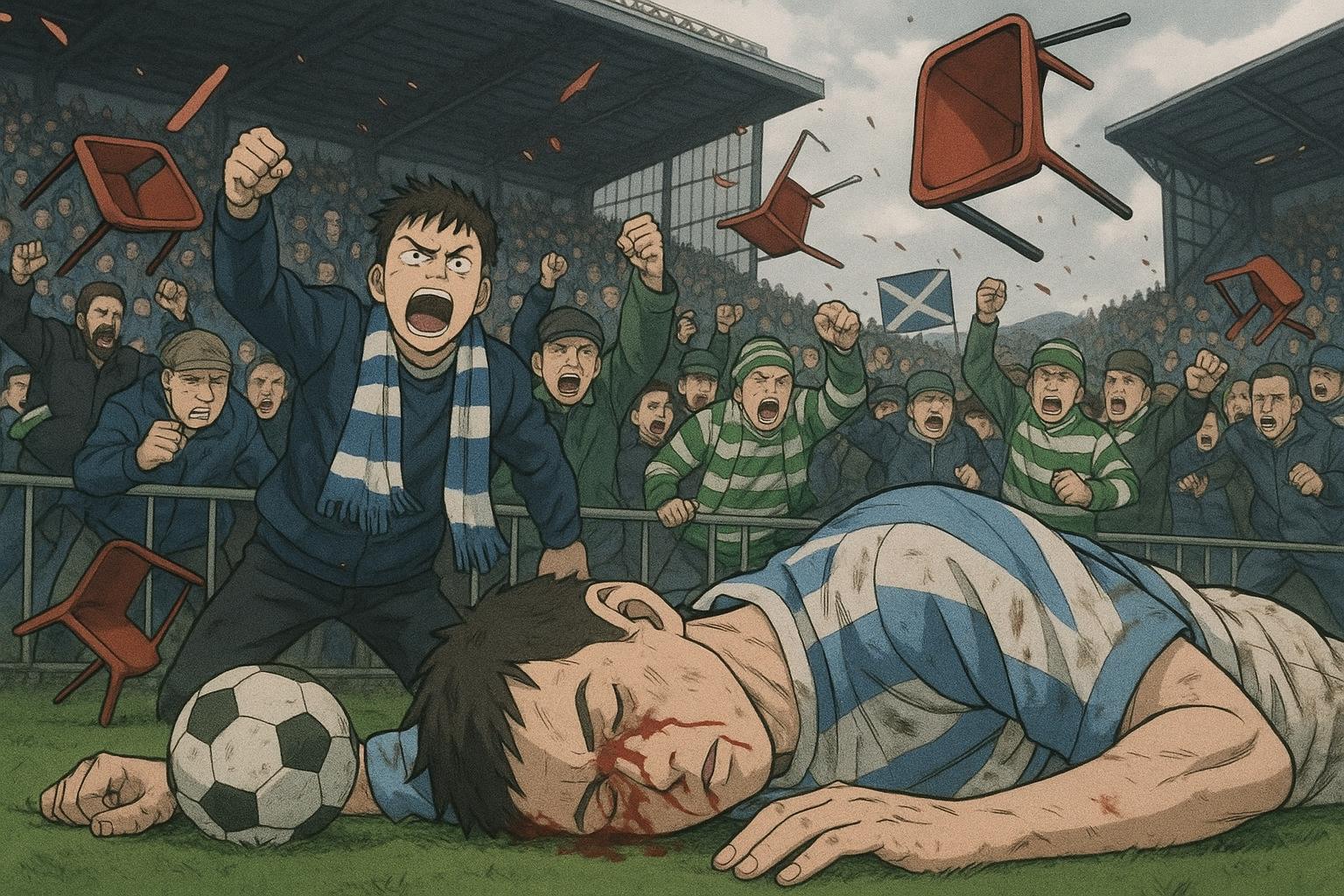Almost four years ago, the chaotic scenes surrounding the final of the European Championships at Wembley became etched in the memory of football fans. The summer of 2021 witnessed unprecedented levels of disorder as England faced Italy, culminating in violent clashes and shameful acts that would tarnish the sport’s image in Britain. Among the many shocking moments was an infamous image of a fan engaging in drug use in a brazen display of recklessness. When interviewed later, he expressed no regrets, claiming to have consumed over 20 cans of cider and taken multiple grams of cocaine before sneaking into the stadium. The disturbing events served as a call to action, leading to the Casey Review, which pointed out that fatalities were narrowly avoided in some cases and recommended significant changes to prevent future disorder.
In Scotland, the absence of stadiums like Wembley has often led to complacency regarding football-related violence and disorder. However, recent incidents suggest that Scottish football is not immune to the rising tide of fan aggression. Just a few days ago, Aberdeen’s Jack MacKenzie was seriously injured after being struck in the face by a chair thrown by a member of his own team's supporters during a match at Tannadice. This shocking episode is not an isolated incident but part of a worrying trend that has seen increasing violence erupt in stadiums and surrounding areas across Scotland.
Partick Thistle had previously reported injuries to young fans caused by pyrotechnics during a play-off match against Ayr United, alongside disturbing incidents that occurred before matches, including violent skirmishes between rival supporters. The Scottish Cup semi-final in which a St Johnstone supporter suffered an epileptic fit due to a pyro display further illustrates the dangerous environment that is increasingly becoming the norm in Scottish football. Furthermore, during a recent Old Firm match, Celtic goalkeeper Viljami Sinisalo became a target of thrown missiles, illustrating how quickly an enjoyable sporting event can descend into chaos.
Despite the Scottish football authorities' persistent denial of responsibility, the evidence is mounting. Alastair Blair, Director of Operations at the Scottish Football Supporters’ Association, voiced deep concerns, stating: “Nobody should ever go to a football match and not make it home.” He highlighted the disturbing prospect that the current trajectory of disorder could eventually lead to a fatality linked to fan violence. This sentiment is echoed across various supporters' groups who are demanding greater accountability and urging football authorities to take decisive preventative measures.
Recent studies show that the subculture of football fans increasingly favours cocaine usage over alcohol on matchdays, exacerbating the potential for disorder. A growing number of fans opt for cocaine, utilising social media platforms like WhatsApp to organise drug deliveries near stadiums. According to research from the University of Stirling, drug use now surpasses alcohol consumption as a principal safety concern at matches. A survey highlighted that while only 2.6% of the general population reports using cocaine, this figure jumps to over 6% amongst football fans, with 30% having witnessed drug use openly during matches.
The link between substance abuse and behaviour in stadiums cannot be overlooked. As noted by Geoff Pearson, a senior lecturer in criminal law, for many fans, the match experience extends beyond the sport itself to a social event that incorporates drugs and aggressive displays. “It’s a transgressive experience,” he explained, indicating that watching the match is only one part of the occasion for many attending.
The current situation in Scottish football raises pressing questions about the efficacy of existing safety measures. Not only have recent months seen an escalation of incidents, but the culture of intimidation and violence continues to thrive unchecked. Police Scotland has reported numerous arrests related to disorder at matches, with ongoing investigations aimed at addressing the root causes of violence.
As discussions surrounding potential reforms to address these issues gain momentum, stakeholders suggest that football authorities must take proactive measures to improve safety and defuse fan tensions. A shift towards a system of strict liability has been proposed as a means of holding clubs accountable for the behaviour of their supporters, pushing for a zero-tolerance approach to violence and substance misuse.
In a sport that should foster community spirit and enjoyment, the increasing instances of aggression and unrestrained chaos present a troubling development. The consensus among fans remains that everyone deserves to attend matches free from fear. As Scotland grapples with the consequences of unchecked fan behaviour, the onus is now on football's governing bodies to act decisively or risk tarnishing the sport further.
Reference Map
- Paragraph 1: (1)
- Paragraph 2: (1)
- Paragraph 3: (1)
- Paragraph 4: (1), (2), (3)
- Paragraph 5: (1), (4), (5)
- Paragraph 6: (1), (3), (2)
- Paragraph 7: (1), (3)
- Paragraph 8: (2), (3)
- Paragraph 9: (2), (3)
- Paragraph 10: (1), (4)
- Paragraph 11: (4), (5)
- Paragraph 12: (6)
Source: Noah Wire Services
